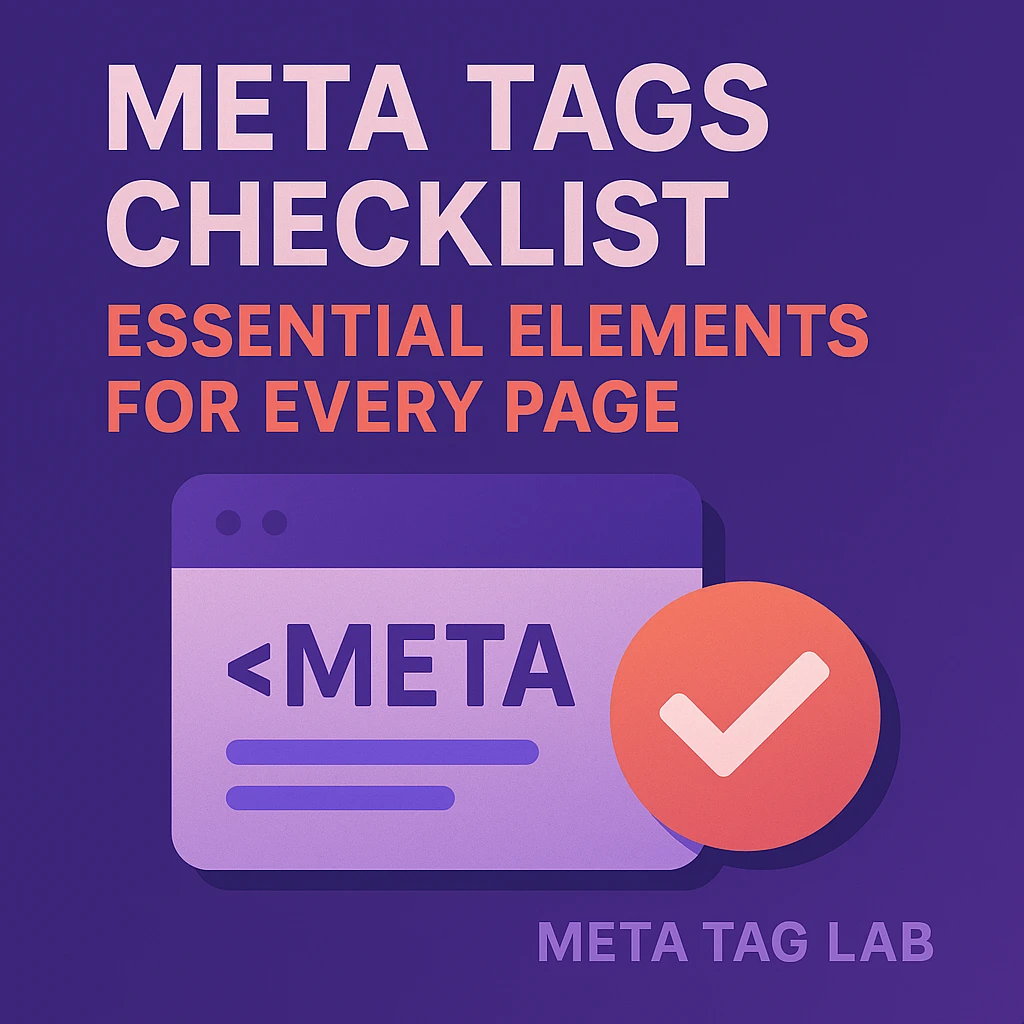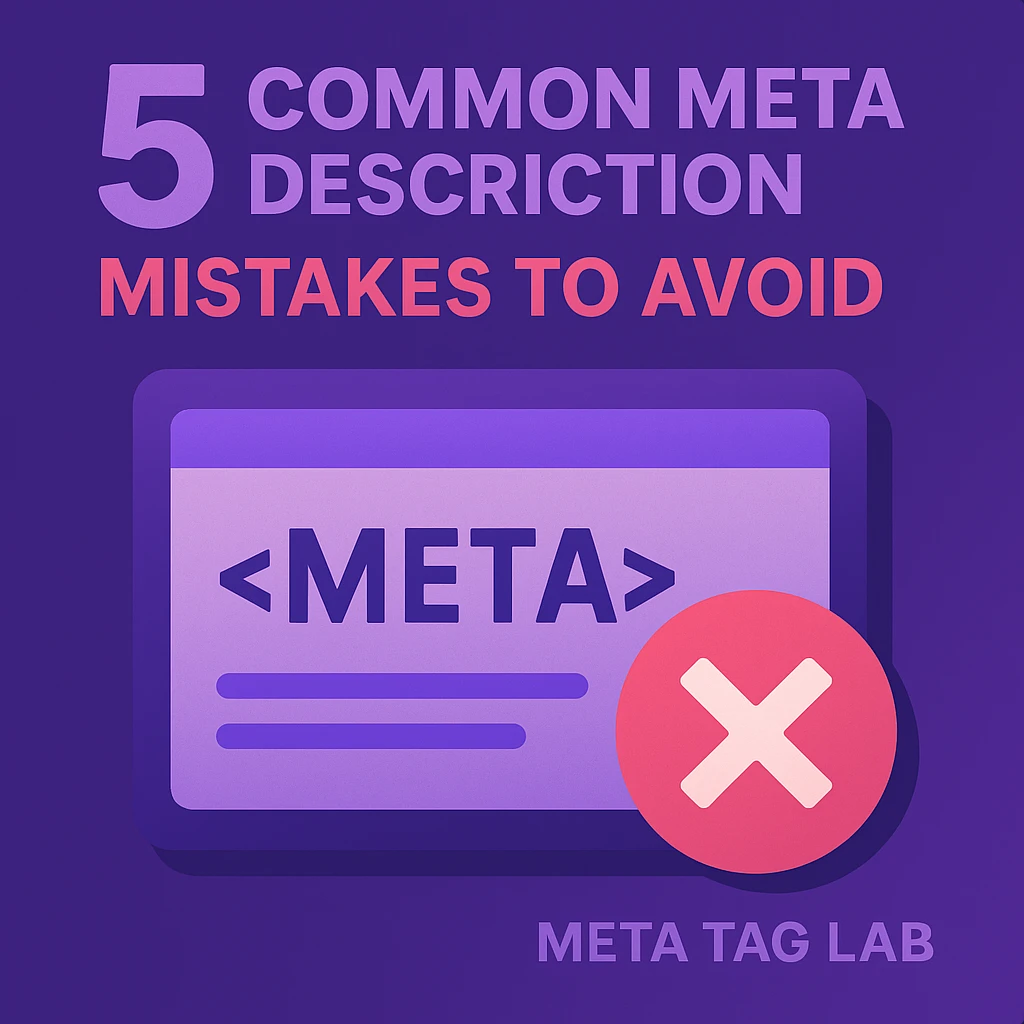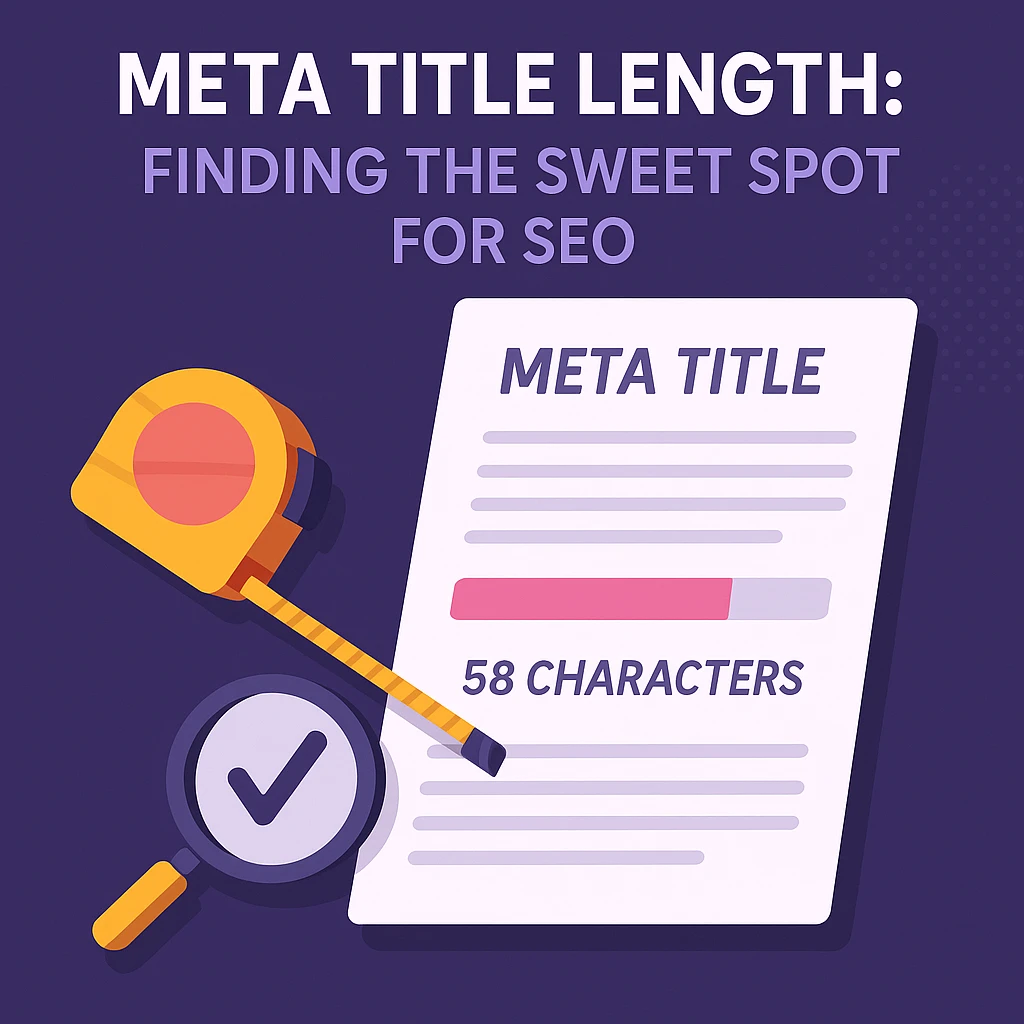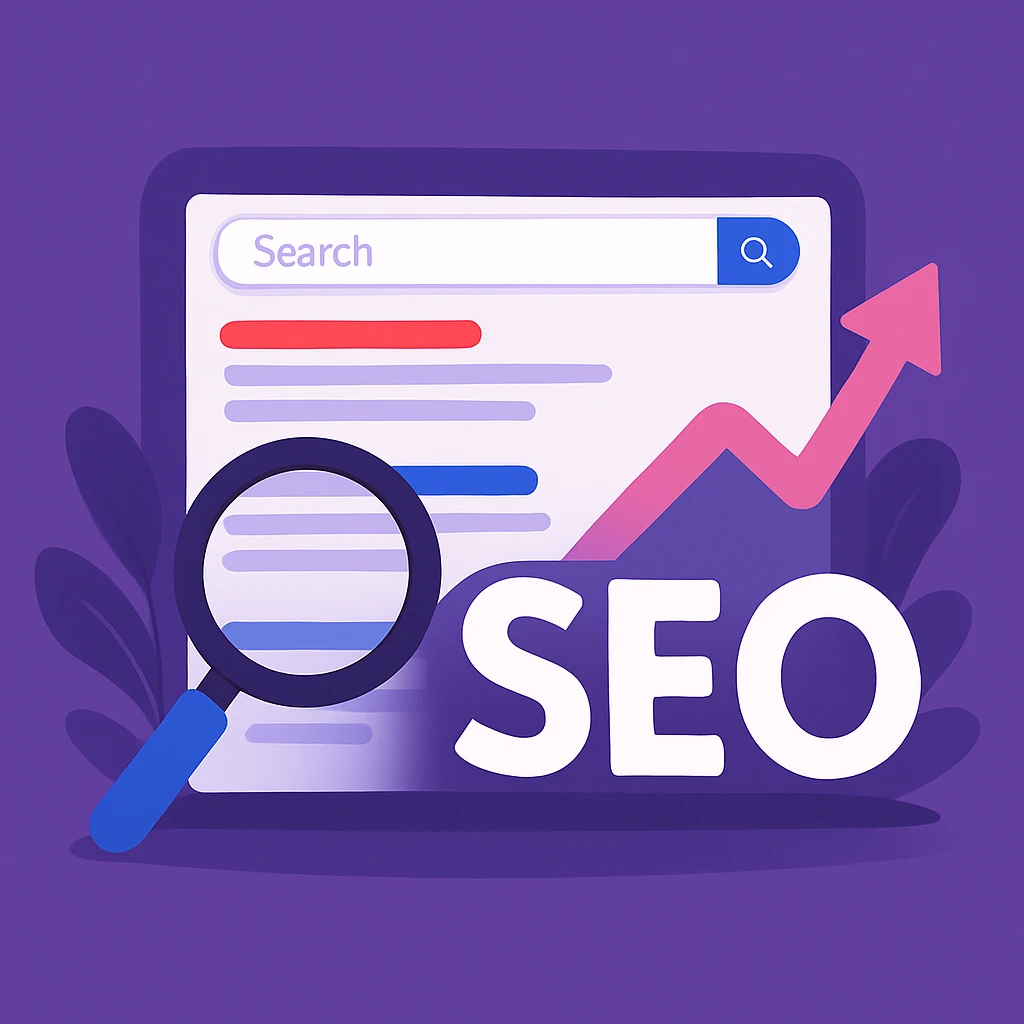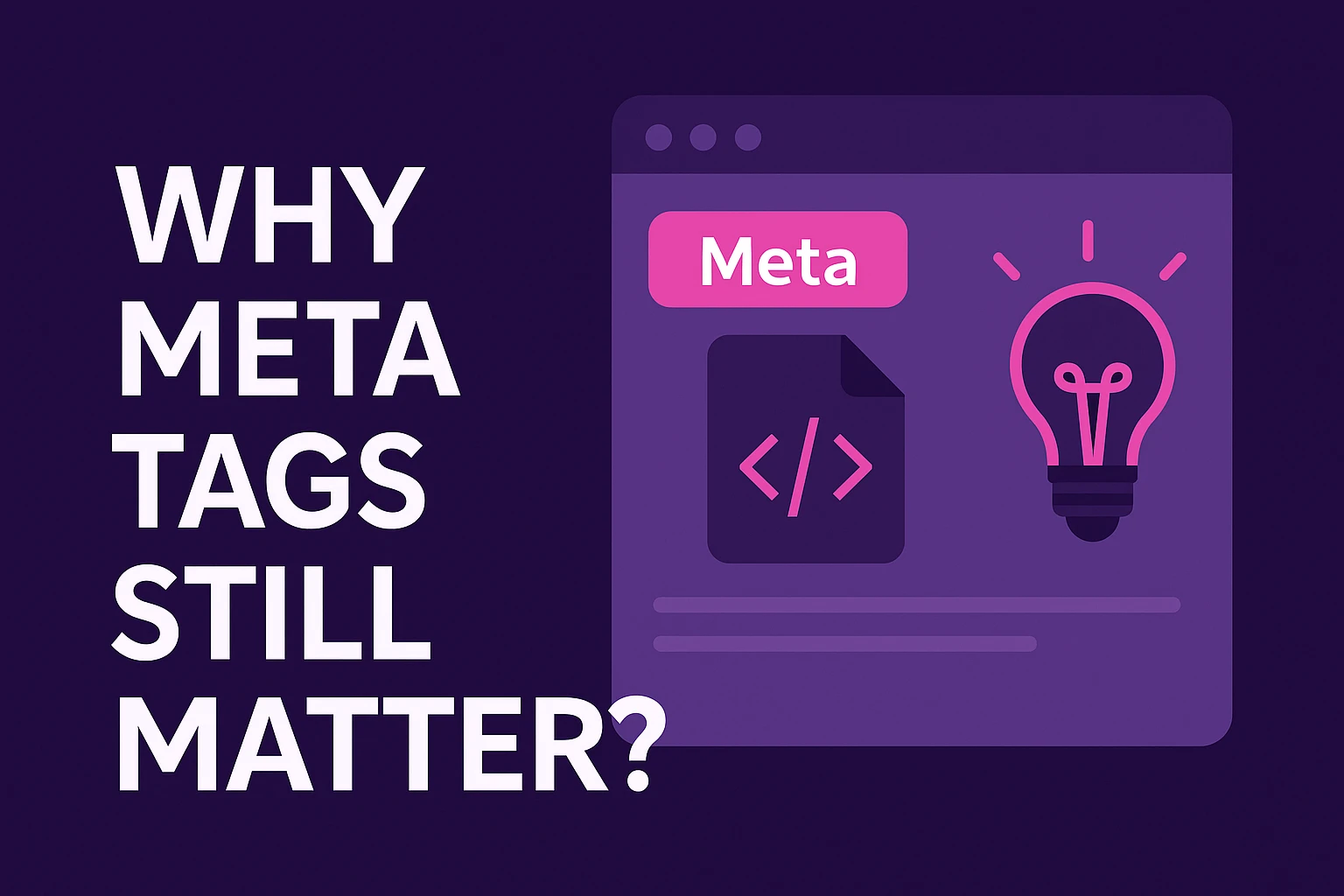A well-crafted meta tags checklist is crucial for enhancing website visibility and performance in search results. Did you know that a significant percentage of websites fail to optimize their meta tags, resulting in missed opportunities for search engine ranking improvements?
By following meta tags best practices, you can significantly improve your website’s search engine ranking and drive more traffic to your site. This guide will walk you through the essential elements of a comprehensive meta tags checklist, ensuring you’re well on your way to optimizing your website for search engines.
Key Takeaways
- Understand the importance of meta tags in SEO
- Learn how to optimize meta tags for better search engine ranking
- Discover the essential elements of a comprehensive meta tags checklist
- Improve your website’s visibility and performance in search results
- Stay ahead of the competition with meta tags best practices
Understanding Meta Tags and Their Impact on SEO
Understanding meta tags is essential for any SEO strategy, as they significantly impact how search engines rank and display web pages. Meta tags are snippets of text that provide search engines with information about a web page’s content, helping them understand its relevance and context.
What Are Meta Tags?
Meta tags are HTML tags that offer metadata about a web page. They don’t appear on the page itself but are embedded in the page’s code. Meta tags are crucial for SEO meta tag optimization, as they help search engines like Google understand the page’s content, structure, and relevance to specific search queries.
How Meta Tags Influence Search Engine Rankings
Meta tags influence search engine rankings by providing search engines with vital information about a web page. They help search engines determine the page’s relevance to a search query, its content quality, and its authority on a particular topic. By optimizing meta tags, webmasters can improve their page’s visibility and ranking on search engine results pages (SERPs).
The Evolution of Meta Tags in SEO
Meta tags have evolved significantly over the years. Initially, they were a key factor in SEO, but as spamming became prevalent, search engines began to rely less on them. However, certain meta tags remain crucial for SEO meta tag optimization.
Historical Importance vs. Current Value
Historically, meta tags like keyword tags were heavily used but later became less important due to abuse. Today, meta tags like title tags and description tags are still valued for their role in SEO.
The current value of meta tags lies in their ability to provide search engines with accurate and relevant information about web pages, enhancing their visibility and ranking.
The Complete Meta Tags Checklist for 2025
In the ever-evolving landscape of SEO, meta tags remain a fundamental element for webpage optimization. As we navigate through 2025, understanding and implementing the right meta tags is crucial for enhancing your website’s visibility and performance.
Essential Meta Tags Every Page Needs
Certain meta tags are considered essential due to their significant impact on SEO and user experience. These include:
Title Tags
Title tags are crucial as they define the title of a webpage, appearing in search engine results pages (SERPs) and browser tabs. A well-crafted title tag should be descriptive, concise, and include the primary keyword.
Description Tags
Meta description tags provide a summary of the webpage’s content, influencing click-through rates from SERPs. They should be compelling, include relevant keywords, and be within the recommended length.
Viewport Tags
The viewport meta tag is essential for ensuring proper rendering and responsiveness on mobile devices, enhancing user experience across various screen sizes.
Recommended Meta Tags for Enhanced Performance
Beyond the essentials, certain meta tags can further enhance your webpage’s performance and visibility.
Social Media Tags
Social media meta tags, such as Open Graph and Twitter Cards, control how your content appears when shared on social platforms, improving engagement and click-through rates.
Robots Tags
The robots meta tag instructs search engines on how to crawl and index your webpage, allowing for more control over your site’s visibility in search results.
Optional Meta Tags Worth Considering
While not essential, other meta tags can provide additional benefits depending on your website’s specific needs and goals.
By understanding and implementing these meta tags effectively, you can significantly improve your website’s SEO and user experience in 2025.
Meta Title Tags: Crafting Perfect Page Titles
The title tag is a fundamental element of SEO, influencing both search engine rankings and click-through rates. A well-crafted title tag can significantly improve your webpage’s visibility and appeal to potential visitors.
Best Practices for Title Tag Optimization
To optimize your title tags effectively, focus on making them descriptive, concise, and rich in relevant keywords. Ensure that each title tag is unique to its page and accurately reflects the content. Using a consistent format across your site can also enhance user experience and SEO.
Key elements of an optimized title tag include: a clear description of the page content, relevant keywords near the beginning, and a compelling summary that encourages click-throughs.
Common Title Tag Mistakes to Avoid
Avoid common pitfalls such as keyword stuffing, overly long or short titles, and duplicate title tags across multiple pages. These mistakes can negatively impact your SEO efforts and user experience.
Title Tag Length and Format Guidelines
The ideal meta tag length for title tags varies between desktop and mobile devices. Generally, keep your title tags under 60 characters to ensure they display fully in search engine results.
Desktop vs. Mobile Title Display
On desktop devices, title tags can be up to 60 characters. However, on mobile devices, they’re typically truncated after about 50-55 characters due to the smaller screen size. Consider this when crafting your title tags to ensure they’re effective across all devices.
Title Tag Examples for Different Page Types
Different page types require different approaches to title tag optimization. For example, a product page might include the product name and key details, while a blog post title might be more descriptive and attention-grabbing.
By following these guidelines and best practices, you can improve your website’s meta tag optimization and overall SEO performance.
Meta Description Tags: Writing Compelling Snippets
The art of writing compelling meta descriptions is essential for capturing users’ attention in search results. A meta description is a short summary of a web page’s content, and it plays a crucial role in determining whether a user will click on your page or not.
Creating Click-Worthy Meta Descriptions
To create click-worthy meta descriptions, you need to understand your target audience and what motivates them to click on a search result. Use action-oriented language and include relevant keywords to make your description more discoverable. For instance, using a meta tag analyzer tool can help you identify the most effective keywords for your meta descriptions.
It’s also important to ensure that your meta descriptions are descriptive, yet concise. They should provide a clear idea of what users can expect to find on your page.
Meta Description Length and Formatting
The ideal length for a meta description is between 150-160 characters. Avoid using descriptions that are too short or too long, as they may not display properly in search results. Additionally, ensure that your descriptions are free of special characters and formatting, as these can be truncated or displayed incorrectly.
Using Keywords Effectively in Descriptions
Incorporating relevant keywords into your meta descriptions can improve their visibility in search results. However, avoid keyword stuffing, as this can lead to a negative user experience. Instead, use keywords naturally and focus on creating descriptions that are both informative and compelling.
A/B Testing Meta Descriptions
A/B testing your meta descriptions can help you determine which versions perform better. Use data-driven insights to refine your meta descriptions and improve your click-through rates. By testing different variations, you can gain a deeper understanding of what resonates with your audience.
By following these best practices and using tools like a meta tag analyzer, you can create meta descriptions that drive real results for your website.
Meta Robots Tags: Controlling Search Engine Behavior
Meta robots tags play a crucial role in determining how search engines interact with and index webpages. By implementing these tags, website owners can control search engine behavior, ensuring their content is crawled, indexed, and displayed appropriately.
Index vs. Noindex: When to Use Each
The index and noindex directives are fundamental to controlling whether a webpage is included in search engine results. The index directive allows search engines to include the page in their index, making it visible to users searching for related content. Conversely, the noindex directive instructs search engines to exclude the page from their index, useful for thin content, duplicate pages, or sensitive information.
For example, a blog post intended for public consumption should be indexed, while a thank-you page after a purchase might be set to noindex to avoid cluttering search results.
Follow vs. Nofollow Directives
The follow and nofollow directives guide search engines on whether to follow links on a webpage. The follow directive allows search engines to crawl linked pages, potentially improving their visibility. The nofollow directive instructs search engines to ignore these links, useful for avoiding spam or untrusted sources.
“Using nofollow on untrusted links can help prevent spam and improve the credibility of your website.”
Advanced Robots Meta Directives
Beyond the basic index and follow directives, there are advanced meta robots tags that offer more granular control over search engine behavior.
Noarchive, Nosnippet, and Max-Snippet
The noarchive tag prevents search engines from caching a webpage, ensuring users see the most current version. The nosnippet directive stops search engines from displaying a snippet of the page in search results. The max-snippet tag allows you to specify the maximum number of characters to display in a search result snippet.
Noimageindex and Max-Image-Preview
The noimageindex directive prevents images on a page from being indexed, while max-image-preview allows you to control the size of image previews in search results, enhancing how your content is displayed.
By mastering these meta robots tags, website owners can refine their SEO strategy, improving how their content is crawled, indexed, and presented in search engine results.
Social Media Meta Tags: Optimizing for Sharing
Optimizing your website for social media sharing through meta tags is a simple yet effective way to enhance your content’s visibility and engagement. As social media platforms continue to play a crucial role in content distribution, using the right meta tags can significantly impact how your content is displayed and shared.
Open Graph Tags for Facebook and LinkedIn
Open Graph tags are essential for controlling how your content appears when shared on Facebook and LinkedIn. These tags provide a way to specify the title, description, and image that accompany your shared content.
og:title, og:description, og:image
The og:title tag defines the title of the shared content, while the og:description tag provides a brief summary. The og:image tag specifies the image that will be displayed alongside your content. Using these tags effectively can improve the click-through rate and engagement on your shared content.
Twitter Card Meta Tags
Twitter Card meta tags allow you to control how your content is displayed when shared on Twitter. By using these tags, you can enhance the appearance of your tweets and improve engagement.
Summary vs. Summary Large Image Cards
Twitter offers different types of cards, including Summary and Summary Large Image cards. The Summary card provides a compact view of your content, while the Summary Large Image card includes a larger image, making it more visually appealing. Choosing the right card type depends on your content and the level of engagement you desire.
Pinterest-Specific Meta Tags
Pinterest uses its own set of meta tags to optimize content for sharing on its platform. By using Pinterest-specific meta tags, you can control how your images and descriptions appear when pinned.
Testing Social Media Meta Tags
After implementing social media meta tags, it’s crucial to test them to ensure they are working as intended. Tools like Facebook’s Debugger and Twitter’s Card Validator can help you verify that your meta tags are correctly configured and that your content is being displayed as expected.
By optimizing your meta tags for social media sharing and regularly testing them, you can maximize your content’s reach and engagement across different platforms.
Viewport and Mobile Meta Tags
As mobile devices become increasingly dominant in web traffic, viewport and mobile meta tags have become crucial for a seamless user experience. Ensuring that your website is optimized for mobile devices is no longer a choice but a necessity.
Responsive Design Meta Tags
Responsive design is key to providing a good user experience across various devices. The viewport meta tag is essential for responsive design. It controls the zooming and scaling of web pages on mobile devices. A typical example of a viewport meta tag is: <meta name=”viewport” content=”width=device-width, initial-scale=1.0″>. This tag tells the browser to use the device’s screen width and to scale the content to 1:1, ensuring that your website is displayed properly on different devices.
Mobile-Specific Meta Tag Considerations
Beyond the viewport meta tag, there are other mobile-specific considerations. For instance, you can use meta tags to specify how your website should be displayed on different mobile platforms. Some meta tags are specific to certain devices or browsers, such as Apple touch icons for iOS devices.
Testing Mobile Meta Tags
Testing your mobile meta tags is crucial to ensure they are working as intended. There are various tools available for this purpose.
Mobile-Friendly Test Tools
Google’s Mobile-Friendly Test tool is a popular choice for checking how mobile-friendly your website is. It analyzes your site and provides feedback on what needs improvement. Other tools, like SEMrush and Ahrefs, also offer mobile usability audits as part of their SEO audit services.
By focusing on viewport and mobile meta tags, you can significantly enhance the user experience for your mobile visitors, potentially leading to better engagement and conversion rates.
Language and Geographic Meta Tags
In today’s global digital landscape, meta tags play a crucial role in communicating a website’s language and geographic relevance to search engines. This not only enhances user experience but also improves search engine rankings by ensuring that the content is served to the right audience.
Specifying Content Language
Specifying the language of your content is vital for search engines to understand and correctly index your pages. This is achieved through the use of the lang attribute in the HTML tag. For instance, <html lang=”en”> indicates that the content is in English.
Geo-Targeting with Meta Tags
Geo-targeting involves signaling to search engines that your content is relevant to a specific geographic region. While meta tags alone are not sufficient for geo-targeting, they can be used in conjunction with other signals like domain names (e.g., .co.uk for the UK) and content localization.
Hreflang Tags for International Sites
Hreflang tags are crucial for international sites as they help search engines understand the relationship between different language or regional versions of a page. This is particularly useful for avoiding duplicate content issues and ensuring that users are directed to the most appropriate version of a page based on their language and location preferences.
Implementing Hreflang for Multiple Countries
When implementing hreflang tags for multiple countries, it’s essential to specify the language and region correctly. For example, <link rel=”alternate” hreflang=”en-gb” href=”https://example.com/en-gb”> indicates a version of the page for English-speaking users in Great Britain.
Common Hreflang Mistakes
Common mistakes when using hreflang tags include incorrect language or region codes, not specifying a return link (i.e., not reciprocating links between different versions of a page), and not including a self-referential link. Ensuring accuracy and completeness in hreflang implementation is crucial for effective international SEO.
Meta Tag Analysis and Optimization Tools
To ensure your website’s meta tags are performing at their best, it’s essential to leverage meta tag analysis and optimization tools. These tools help identify areas for improvement, optimize your meta tags for better search engine rankings, and enhance your website’s overall SEO performance.
Free Meta Tag Analyzers
Several free tools are available for analyzing meta tags, providing insights into how to improve them. Two notable tools are:
Google Search Console
Google Search Console is a powerful tool that offers insights into your website’s search engine performance, including meta tag analysis. It helps identify issues with meta tags, such as missing or duplicate tags, and provides recommendations for improvement.
Screaming Frog SEO Spider
Screaming Frog SEO Spider is another valuable tool for meta tag analysis. It crawls your website, analyzing meta tags among other SEO elements, and provides a comprehensive report on areas that need optimization.
Premium SEO Tools for Meta Tag Auditing
For more advanced meta tag analysis and auditing, premium SEO tools are available. Some of the top tools include:
Semrush and Ahrefs
Semrush and Ahrefs are renowned SEO tools that offer comprehensive meta tag analysis and auditing capabilities. They provide detailed insights into meta tag performance, suggestions for improvement, and competitor analysis.
Moz Pro
Moz Pro is another premium SEO tool that offers advanced meta tag analysis. It helps identify optimization opportunities, tracks keyword rankings, and provides actionable insights to enhance your SEO strategy.
As “The right tools can make all the difference in optimizing your meta tags”, it’s crucial to choose the tools that best fit your SEO needs.
Browser Extensions for Quick Meta Tag Checks
Browser extensions offer a quick and easy way to analyze meta tags directly within your browser. These extensions can provide instant feedback on meta tag optimization, helping you make adjustments on the fly.
“Using the right browser extensions can streamline your meta tag optimization process,” said an SEO expert.
SEO Expert
Meta Tag Generators: Pros and Cons
Meta tag generators can simplify the process of creating meta tags, especially for those new to SEO. However, they have their pros and cons. While they can save time, they may not always provide the most optimized or relevant meta tags for your specific content.
In conclusion, utilizing the right meta tag analysis and optimization tools is crucial for enhancing your website’s SEO performance. By leveraging both free and premium tools, you can ensure your meta tags are optimized for the best possible search engine rankings.
Future-Proofing Your Meta Tags Strategy
As search engine algorithms continue to evolve, a well-planned meta tags checklist is crucial for maintaining optimal meta tag optimization. Staying ahead of the curve requires adapting to the latest best practices and updates in search engine guidelines.
To future-proof your meta tags strategy, regularly review and update your meta tags checklist to ensure compliance with the latest SEO standards. This includes keeping abreast of changes in meta tag optimization techniques and adjusting your approach as needed.
By doing so, you can improve your website’s visibility, drive more traffic, and stay competitive in the ever-changing landscape of search engine rankings. Effective meta tag optimization is key to achieving these goals, and a comprehensive meta tags checklist is essential for guiding your optimization efforts.

